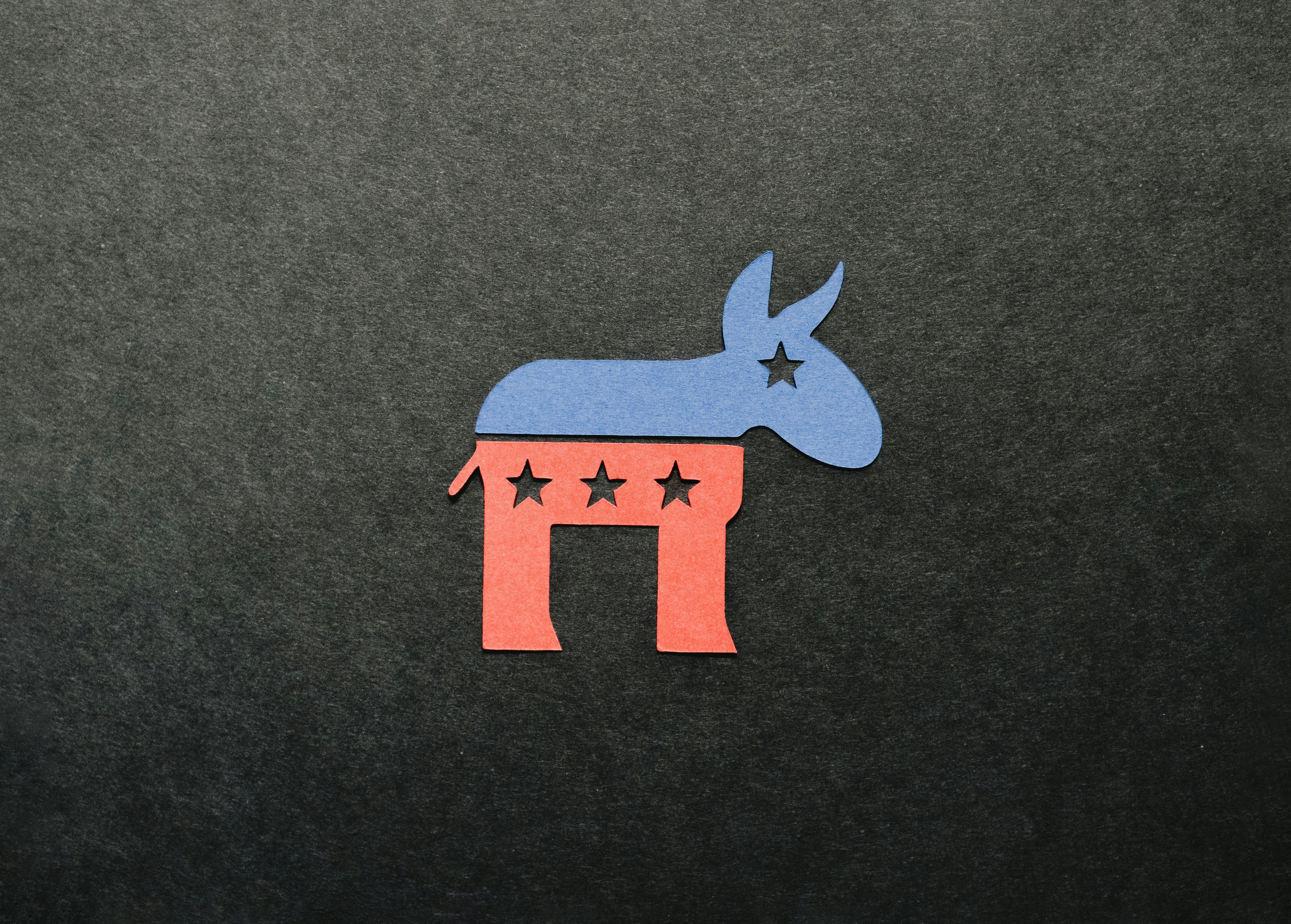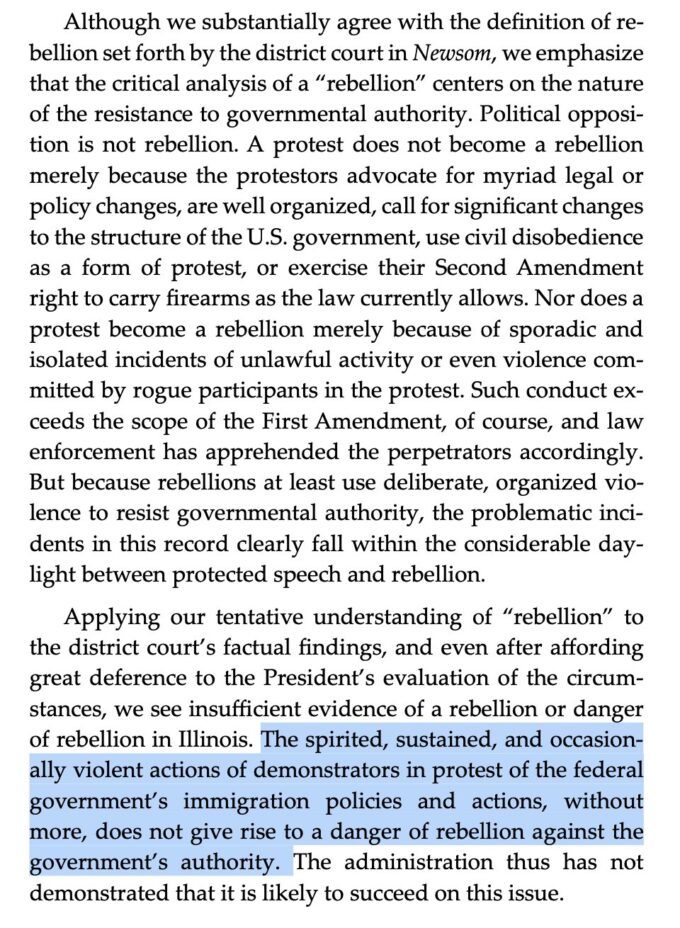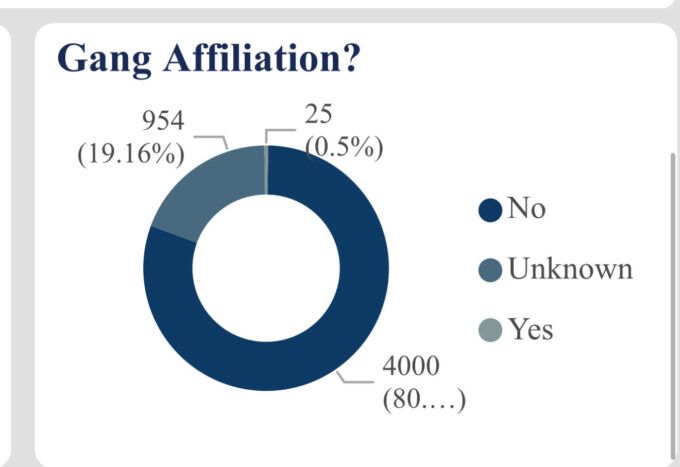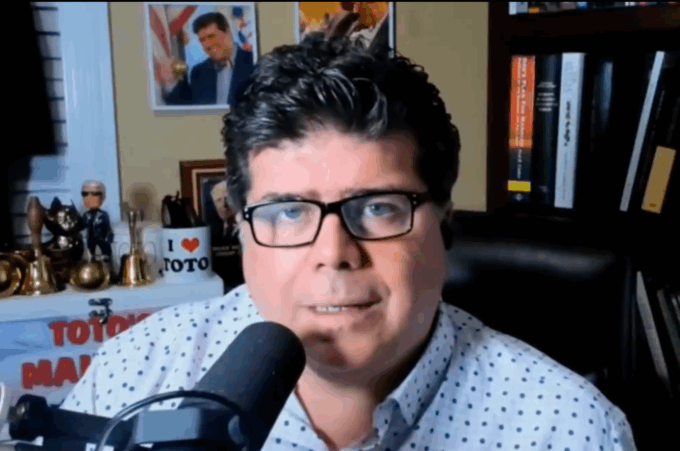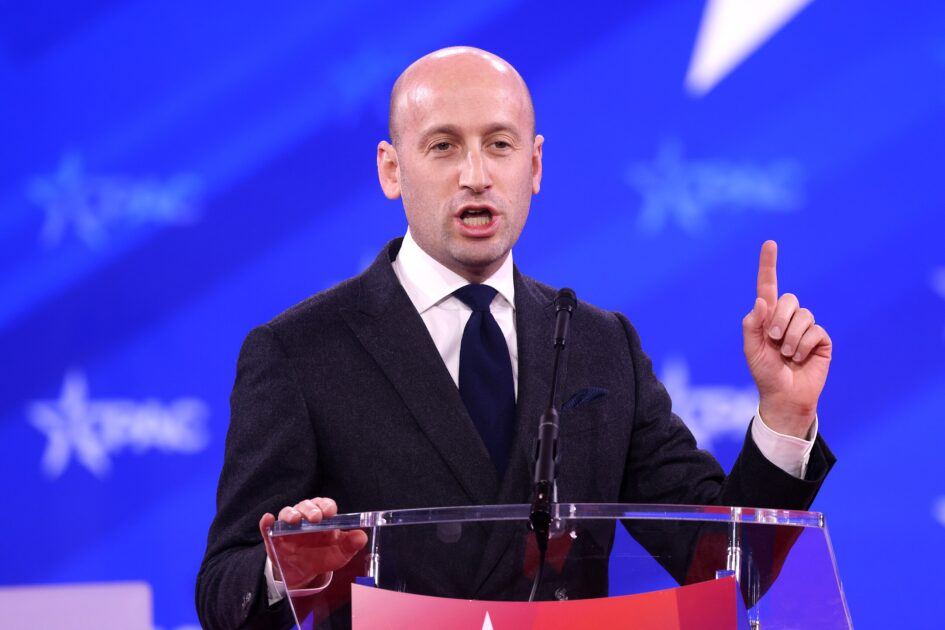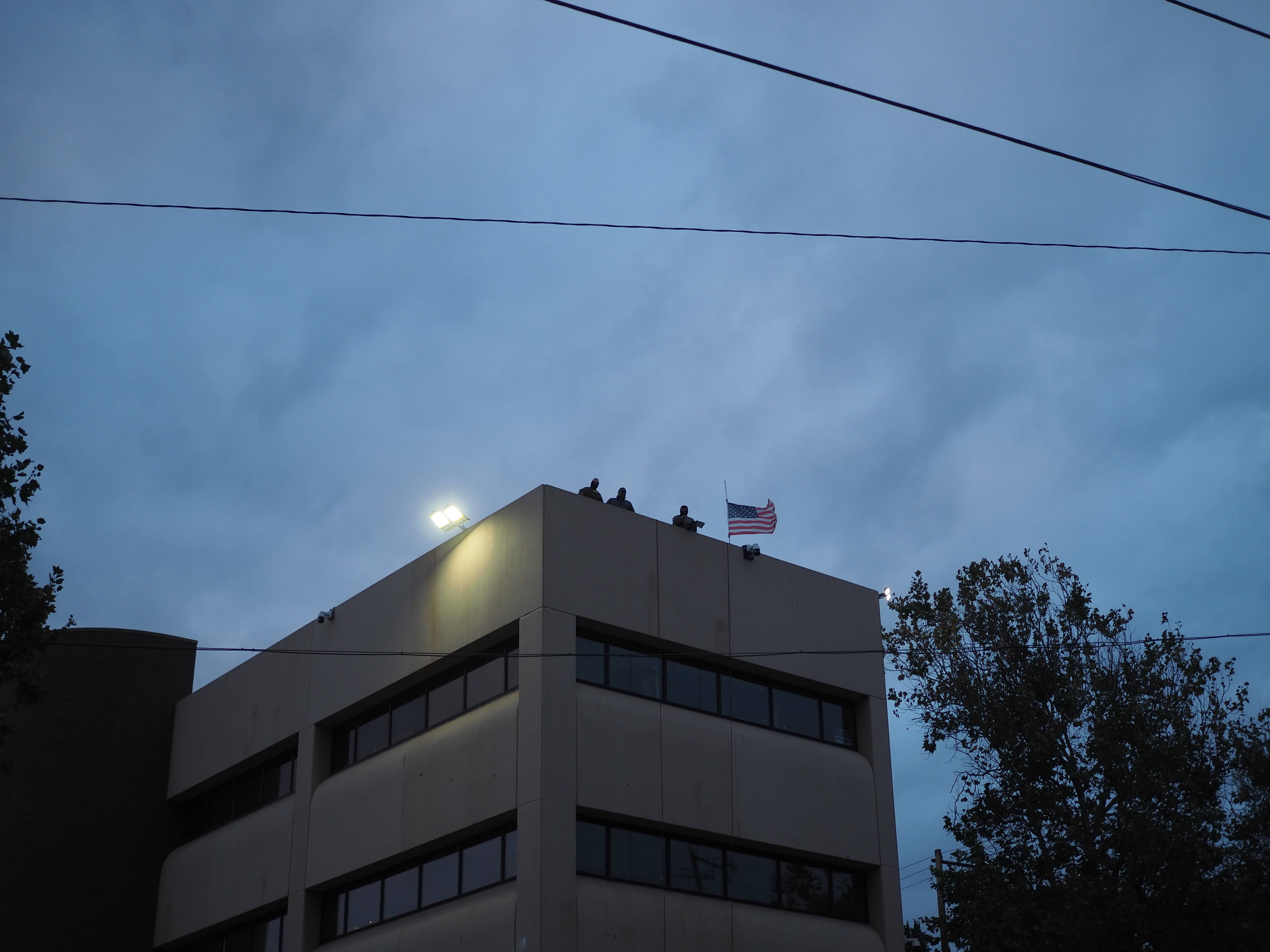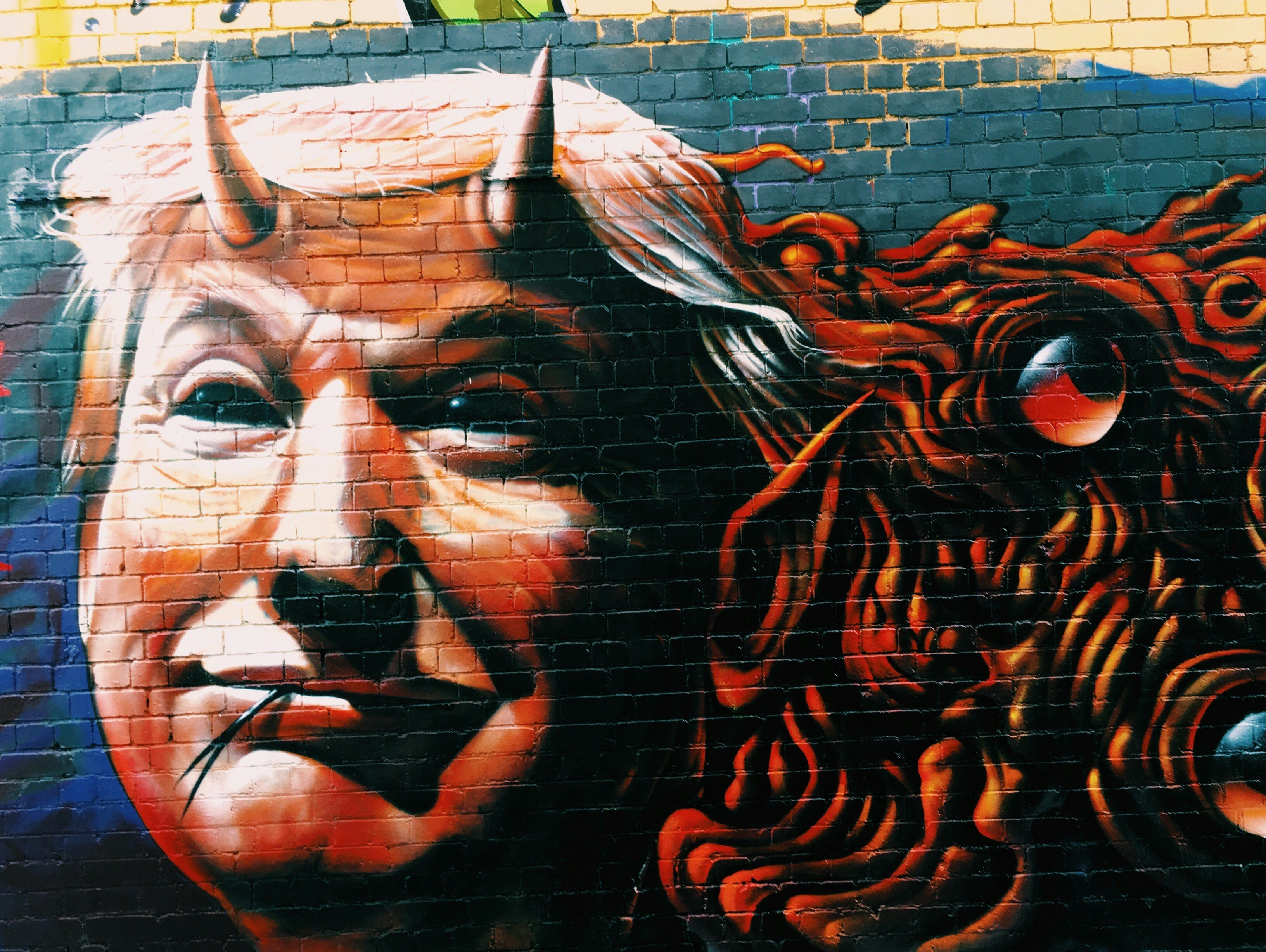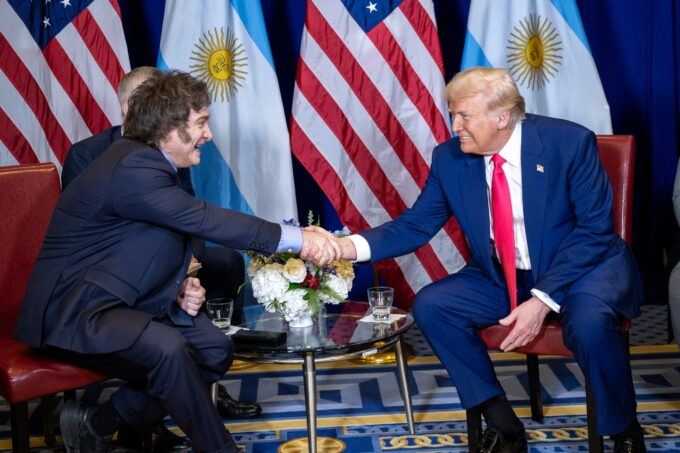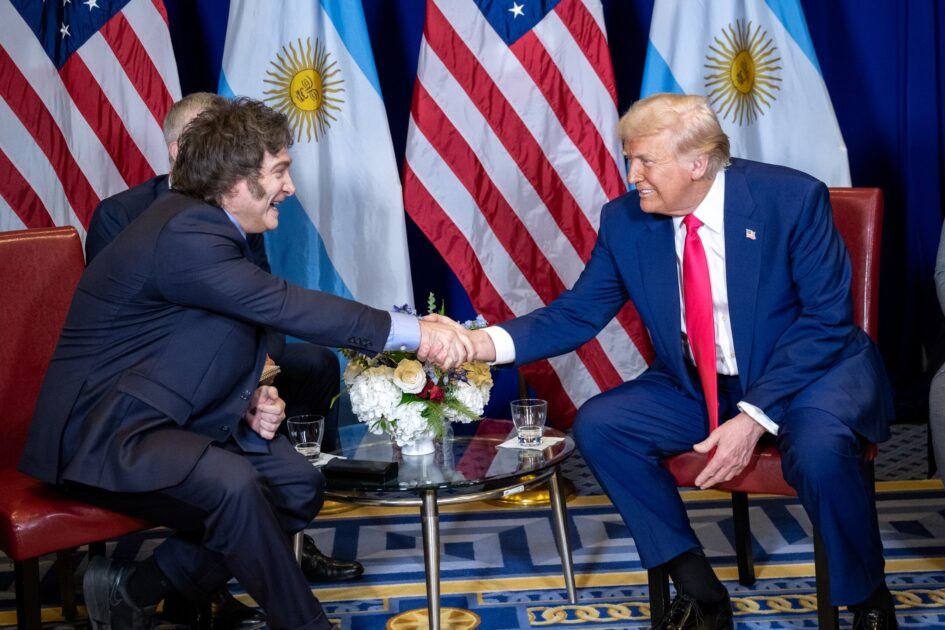











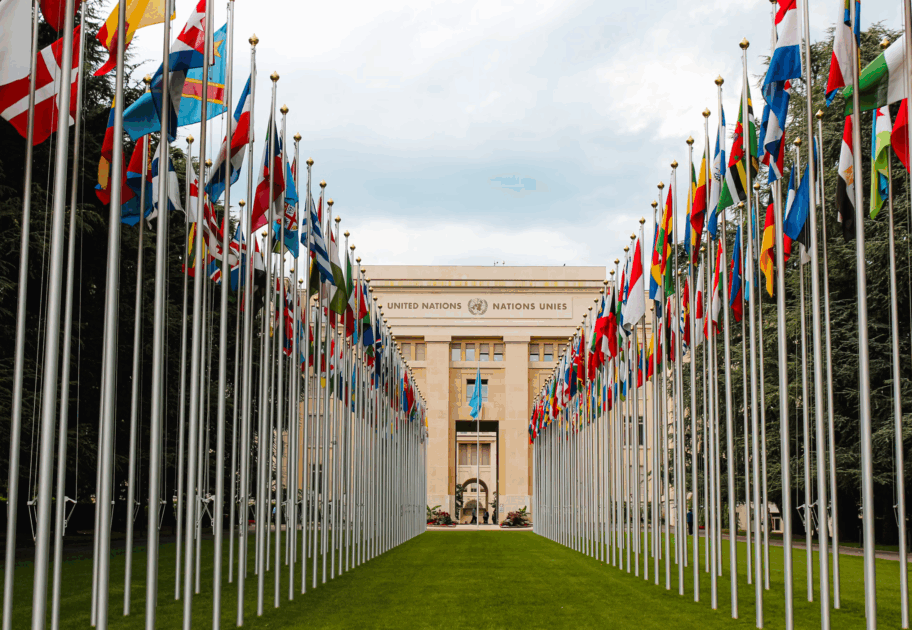





















































The United Nations has recently come under attack from the Trump Administration and, much as it goes against the grain, it’s difficult to argue with real-estate-developer-cum-ambassador-Representative for U.N. Management and Reform [sic], Jeff Bartos:
Over 80 years, the UN has grown bloated, unfocused, too often ineffective, and sometimes even part of the problem. The UN’s failure to deliver on its core mandates is alarming and undeniable.
Yet the problem isn’t really the UN. One notable symptom of its malaise is the Security Council and its five veto-playing permanent members—the US, UK, France, China and Russia—countries representing the world system that assist and cover up for their allies who commit human rights violations, war crimes, and genocide, and that also outsource such crimes. But lèse-humanité is the crime par excellence of the international system. It’s a basic principle of colonial “development”. So what follows isn’t about kicking the UN when it’s down, but about how the rulers of this system use any institution, democratic or otherwise, to achieve their own diabolical and white supremacist ends.
I’m sorry—in more ways than one—that this article is long.
It’s long because the list of UN (when I refer to the UN, I’m basically referring to the world system) offences against the people of West Papua is hideously long. Sadly, my list is by no means complete because there’s lots of “Classified” I don’t know about and many, many secrets, but I hope it gives a glimpse of how the international system works when it wants to get whole encumbering peoples out of its way.
I’m taking it as given that Indonesia is committing genocide in West Papua. It’s done stealthily but there’s plenty of evidence (for example, see here, here, and here) for it. However, the facts show that, in this six-decade-plus crime against humanity, Indonesia has been the tool of other interests, that the role of the United Nations (by which I mean some of its dominant powers and personalities) has been particularly egregious, and this is surely one of the reasons why the West Papua genocide has continued sub rosa, deliberately silenced, for more than sixty years. There are many aspects of the UN betrayal because they belong to big-power politics, and they’re convoluted because of the secrecy that surrounds them.
This isn’t about an isolated instance of genocidal violence. It fits into a world system where white supremacist brutality, going back at least to the period of early modern European overseas expansion from the 15th century, the so-called Age of Discovery (a quintessentially Eurocentric concept), turned into a “scientifically-based” system with the Enlightenment and didn’t end with decolonisation. I’d suggest, after reading documents from the time when West Papua was gifted to Indonesia, that the latter was less the West’s darling than a mere instrument unscrupulously used to favour the economic and geopolitical interests of white supremacy and its destructive notions of “progress and development”. It’s not only the various Indonesian regimes that are responsible for mass murder in West Papua, but also and especially their enablers in the international political system represented by the UN and the big powers.
I can only partially list the crimes committed against West Papua (and, here, I’m indebted to painstaking research by Julian McKinlay King, John Saltford, Greg Poulgrain, and others). But even an incomplete list gives an idea of the magnitude of this lèse-humanité, this core crime of international law. I’m not interested in “speaking truth to power” because I agree with Pankaj Mishra that this is a naïve exercise. Those in power know and control the truth. I studied Politics and am not an expert in international law so I hope I don’t misinterpret some aspects of it. In any case, the hard facts are enraging for any decent human being. Experts in international law are often too invested in, or too occupied with other aspects of the corrupt system to inquire into the evidence of Indonesia’s daily genocidal actions in West Papua, and too demoralised to try to stop them through the shoddy institutions at their disposal. Yet any non-expert person who cares to look at the documents can see quite plainly that, in the last almost 65 years of West Papua’s history, the UN has played a shameful role, not only allowing this to happen but deliberately colluding with it. The very forum that has the power to stop the genocide is complicit in it.
It was only recently that the UN finally acknowledged that Israel is committing genocide in Palestine, and I can’t help wondering whether all this fudging about the word is somehow related with fear of disclosure of the UN’s active role in abetting and silencing the West Papua genocide. I list forty-three aspects of this below.
+++
1. RESOURCES: The scene was set by big power politics in the early 1900s. After the Dutch East Indies gained independence in 1949, Dutch New Guinea remained under Holland’s control until 1962. Greg Poulgrain details how Allen Dulles, CIA director from 1953-1961, aware of West Papua’s immense oil and mineral wealth before the Second World War, decided to bring the colony under Indonesian control, as part of a wider plan of directing Indonesian politics as well. From the early twentieth century, the U.S. Rockefeller-owned Standard Oil had been trying to take over Dutch oil interests in the Indies. After the Netherlands New Guinea Petroleum Company was formed in 1935, Dulles, as official representative of Standard Oil group, was able to use alarmism about Japanese intentions to obtain a 60% US controlling interest in the company. US geologists remained in West Papua for another decade after the Second World War but their findings of vast mineral and oil resources were kept secret by Dutch Foreign Minister Luns and Dulles, so neither Sukarno, nor Kennedy, nor the second UN Secretary-General Dag Hammarskjöld (1953-1961) were informed. The chief concern of Dulles and the Dutch colonial authorities was to wrest control of the gold, copper and oil in the colony they said had no natural resources. In 1961, a Freeport director, Robert Lovett (“architect of the Cold War” and director of Freeport McMoran, which holds 48.8% of the shares in the world’s largest gold mine and one of its largest copper mines in Grasberg, West Papua), got his friend McGeorge Bundy appointed as national security advisor in Washington DC where he could influence US foreign policy, which included playing a significant role in transferring control of West Papua to Indonesia. After Hammarskjöld was murdered (see point 2), McGeorge Bundy and Co. persuaded Kennedy that the handover of West Papua was a necessary measure to save the world from communism. Ideological gloss covered up real motives.
2. MURDER: There’s more to the story than oil and mineral greed. Naturally, it’s also about big power politics. An important factor is the death in a suspicious plane crash in Ndola (then northern Rhodesia, now Zambia) of Hammarskjöld and fifteen other people, eleven of them UN employees, and its subsequent coverup. In those Cold War years, Hammarskjöld was trying to democratise UN workings and was, in Poulgrain’s words, “an outspoken advocate for the economic development of poorer countries”. His plan, which included a Special Fund for these countries, greatly irked leading players on both sides of the Cold War, including Dulles and Nikita Khrushchev, especially when it seemed that President Kennedy supported Hammarskjöld’s approach to decolonisation. This project of “speedy and unconditional granting to all colonial peoples of the right of self-determination” meant that, with the addition of 88 newly independent territories, he would create in the UN a counterweight to the neocolonially ambitious Cold War powers.
3. COVERUP: All this directly pertains to West Papua. Greg Poulgrain reports Hammarskjöld was committed to intervening in the dispute between Indonesia and the Netherlands over sovereignty of West Papua, and planned to declare Dutch and Indonesian claims to the territory invalid at the UN General Assembly in October or November 1961. Kennedy supported him because this saved him from having to decide whether to hand the disputed territory of West Papua to Indonesia or, in these times of decolonisation, to the colonial power, NATO ally the Netherlands, in a thorny situation where the Soviet Union and China supported the Indonesian claim. There seems little doubt that Hammarskjöld and the fifteen other passengers in the plane were murdered. On 20 September 1961, two days after the crash former US president, Harry S. Truman, was quoted in The New York Times as saying, “Mr. Hammarskjold was on the point of getting something done when they killed him. Notice that I said ‘when they killed him’.” The UN huggermuggery about the deaths of its Secretary-General and eleven other staff members in Ndola is suspicious to say the least. West Papua is almost certainly enshrouded in all that secrecy.
4. DUBIOUS CLAIMANTS: Indonesia’s right to negotiate West Papua’s future was questionable. When it was admitted as a sovereign nation to the UN, General Assembly Resolution 448 (V) stated, “Noting the communication dated 29 June 1950 from the Government of the Netherlands will no longer present a report pursuant to Article 73 e on Indonesia with the exception of West New Guinea [my emphasis]”. The UN didn’t recognise West New Guinea as part of Indonesia. Before officially joining the UN in September 1950 but having sworn to respect its principles, and ignoring the fact that West Papua was to be decolonised under the name “Netherlands New Guinea”, Indonesia’s President Sukarno, in his speech of 17 August on the fifth anniversary of Indonesia’s independence, was agitating for “national” unity with the slogan “From Sabang to Merauke” (from the northwesternmost tip of the country, an island off Sumatra, to the eastern town in West Papua). Indonesia’s designs on West Papua were clear from the very start.
5. DEFILING “SACRED TRUST”: As a UN member, Indonesia was obliged to respect the UN Charter and the basic principles expressed therein. Article 73 e, states, “Members of the United Nations which have or assume responsibilities for the administration of territories whose peoples have not yet attained a full measure of self-government recognize the principle that the interests of the inhabitants of these territories are paramount, and accept as a sacred trust the obligation to promote to the utmost, within the system of international peace and security established by the present Charter, the well-being of the inhabitants of these territories”. The interests of the West Papuans were clearly not remotely paramount and, indeed, when Indonesia dishonestly, and evidently dishonestly, agreed to these obligations, the stage was set for an internationally orchestrated coverup of its subsequent serious human right abuses, and even genocide in West Papua, because the UN’s complicity also had to be covered up.
6. WEST PAPUANS EXPUNGED: The New York Agreement between the Republic of Indonesia and the Kingdom of the Netherlands Concerning West New Guinea (West Irian) was signed at the New York headquarters of the UN on 15 August 1962. No representative from West Papua was present. Article I stipulates that “both Contracting Parties, Indonesia and the Netherlands will jointly sponsor a draft resolution in the United Nations under the terms of which the General Assembly of the United Nations takes note of [not “ratifies”] the present Agreement, acknowledges the role conferred upon the Secretary-General of the United Nations therein, and authorizes him to carry out the tasks entrusted to him therein.” Article II says, “the Netherlands will transfer administration of the territory to a United Nations Temporary Executive Authority (UNTEA) established by and under the jurisdiction of the Secretary-General upon the arrival of the United Nations Administrator appointed in accordance with article IV. The UNTEA will in turn transfer the administration to Indonesia in accordance with article XII.” The Agreement came into force on 21 September 1962 when it was acknowledged by General Assembly Resolution 1752 (XVII), which authorized the UN to oversee the transfer, as the basis for its implementation.
7. NAME SCAM: The title of the UN General Assembly Resolution 1752 (XVII – Agreement between the Republic of Indonesia and the Kingdom of Netherlands Concerning West New Guinea (West Irian)) of 18 September 1962 lets slip what was, in fact, a foregone conclusion. The word “Irian” in the name Indonesia gave in 1949 to its future colony (Irian Barat) comes from the acronym Ikut Republik Indonesia Anti-Nederland (To Join the Anti-Netherlands Republic of Indonesia).
8. “STONE-AGE” STIGMA: The formula both Contracting parties is further evidence of how the West Papuan people were excluded from deciding their own fate. They were depicted as “stone-age” people when, in fact, they had already opted for and were ready for independence, with electoral rolls, and the establishment of the New Guinea Council in April 1961, complete with a national manifesto and the Morning Star flag. The Council’s work was callously cut short by the exclusively external, colonial and neocolonial New York Agreement.
9. COMMUNIST FEARMONGERING: The crushing influence of big power considerations is clear in a 1962 U.S. State Department note, which makes no bones about the fact that, “The underlying reason that the Kennedy administration pressed the Netherlands to accept this agreement was that it believed that Cold War considerations of preventing Indonesia from going Communist overrode the Dutch case”. The fact that, from 1957 to 1962, the USSR had committed $900 million in military aid to Indonesia, reinforced the arguments. But the ideological considerations, as they so often do, covered up the other plan to exploit West Papua’s natural resources, of which Kennedy was unaware.
10. SECRET CRONY PROMISES: Only days after the inauguration of President Kennedy, U.S. Ambassador to Indonesia, Howard P. Jones, submitted a seven-point plan to prevent Indonesia from “falling under Communist control”. Key points were the resolution of the West New Guinea question, the promise to Sukarno that the territory would be reunited with Indonesia and “the creation of a personal relationship between Presidents Kennedy and Sukarno”.
11. INSTRUMENTALISATION: For Sukarno, the UN was a mere instrument. When Kennedy raised the issue of the trusteeship, he replied, “we would be willing to borrow the hand of the United Nations [my emphasis] to transfer the territory to Indonesia.” The Department of State and the White House also sought to use the UN as a rubber stamp for their plans because, in fact, Sukarno was their instrument. The matter would really be decided outside the UN. In this process, the Department encouraged the Netherlands and Indonesia to hold secret bilateral negotiations.
12. REMOVING THE NETHERLANDS: Even before Hammarskjöld was murdered, White House and National Security Council staffer Robert Komer was pushing to “spell out for the President that trusteeship was not just a ‘graceful out for the Netherlands,’ but also ‘a cover for eventually giving WNG to Indonesia’”. Meanwhile, Kennedy’s Deputy Special Assistant for National Security Affairs, Walt Rostow, pressed him to “insist that the only resolution of the issue was one that ‘looks to Indonesian control’”, adding that “meaningful self-determination for ‘stone-age Papuans’ would take too long.”
13. FREEPORT DIPLOMACY: Freeport director Robert Lovett’s friend, McGeorge Bundy, “Freeport’s national security pick” and now Kennedy’s National Security Adviser, gave his support to Indonesia, emphasising that “no one in this town does not believe that, sooner or later, the Indonesia will get West Irian”, so the United States had to “work with this trend and not allow the Soviet bloc to exploit the issue”. Kennedy was persuaded and opted for active support of Indonesia.
14. ANTICOMMUNIST PROMISES: In a secret letter to Dr. J. E. de Quay, Prime Minister of the Netherlands, dated 2 April 1962, Kennedy wrote, “If the Indonesian Army were committed to all out war against The Netherlands, the moderate elements within the Army and the country would be quickly eliminated, leaving a clear field for communist intervention. If Indonesia were to succumb to communism in these circumstances, the whole non-communist position in Viet-Nam, Thailand, and Malaya would be in grave peril, and as you know these are areas in which we in the United States have heavy commitments and burdens.” Persuasion of the Dutch “to turn over administrative control of the territory to a UN administrator” came with a promise that Kennedy’s key advisors knew would not be honoured: “The UN, in turn, would relinquish control to the Indonesians within a specified period. These arrangements would include provisions whereby the Papuan people would, within a certain period, be granted the right of self-determination. The UN would be involved in the preparations for the exercise of self-determination.”
15. THE CHIEF LEGAL ADVISOR’S “LIKELY OUTCOME”: Kennedy sent his brother, Attorney General Robert Kennedy, to Indonesia and the Netherlands for UN-supervised bilateral negotiations. Although the Law Boss “could give no assurances to the Indonesians that the Netherlands would agree to transfer WNG to Indonesia, he could say that the United States believed this was the likely outcome …”
16. RACISM: Racism was a potent bargaining point. After Robert Kennedy’s visit, eight members of the New Guinea Council, wired the president: “We protest strongly Robert Kennedy’s humiliating statements on television concerning backwardness Papuan people and lack university trained workers, seemingly indicating advise [sic] to Indonesia to eradicate Papuan people … Independence and democracy can be understood and practiced by common people even if they have not seen Harvard and we have an unalienable right to such practicing …”. The message went unanswered. The State Department considered that “there is no advantage to be gained by replying to these persons”.
17. “CANNIBAL LAND”: In the name of “cold realpolitik” Robert Komer spoke of sacrificing “a few thousand square miles of cannibal land.” In one message dated 15 January 1962 and copied to Bundy, he referred to “that bit of colonial debris called West New Guinea”. His colleague Robert Johnson “considered self-determination [a] meaningless facade when applied to stone-age people almost totally lacking in contact with the modern world.” Robert Amory of the CIA said a plebiscite was “farcical … considering the stone-age level of the West New Guineans”. Press accounts shaped popular culture with lurid accounts of naked cannibals. The legacy endured. In 2014, Savage Harvest: A Tale of Cannibals, Colonialism and Michael Rockefeller’s Tragic Quest for Primitive Art, by Carl Hoffman, purporting to prove that Michael Rockefeller, son of New York Governor, Nelson Rockefeller (with Standard Oil connections of course), who disappeared in West Papua, was killed and eaten by cannibals, has the magic words Savage, Cannibals, and Primitive, while Quest covers what was really misappropriation of sacred works of art. Rockefeller’s father donated the products of this “Quest” to the Metropolitan Museum of Art, which later had a Michael C. Rockefeller Wing where it is truly heartbreaking to see them displayed as mere collectors’ objects, so sterilely, so far from home.
18. “ONLY SEVEN HUNDRED THOUSAND”: For all his fine words immediately after Hammarskjöld’s murder (“That continuing tide of selfdetermination, which runs so strong, has our sympathy and our support”), President Kennedy, now wholly under the influence of his take-the-gloves-off national security advisors, still ignorant of West Papua’s oil and mineral wealth, unable to understand why the Dutch wanted to keep that “bit of colonial debris”, and swayed by the anti-communist argument, expressed a callous lack of concern about “those Papuans” a few months later. When the Dutch ambassador J. H. van Roijen, compared Papua to Berlin, Kennedy answered, “Oh, that is entirely different because there are something like two and a quarter million West Berliners where there are only seven hundred thousand of those Papuans. Moreover, the West Berliners are highly civilised and highly cultured, whereas those inhabitants of West New Guinea are living, as it were, in the Stone Age.”
19. MILITARY REALITY: On 11 March 1962, on US instructions, UN Acting Secretary General U Thant appointed businessman, diplomat, and hawk, Ambassador Ellsworth Bunker as mediator for forthcoming Dutch/Indonesian talks. This was in violation of Article 100 of the UN Charter, In these talks (by which time Indonesia had already launched a small-scale invasion of West Papua shortly after Dag Hammarskjöld was killed), Bunker proposed that Indonesia should be given administration of West Papua and that the United Nations should be involved in the process of “self-determination” for its people. The transfer would take two years, with Indonesians replacing U.N. administrators in the second year. The United Nations would oversee a subsequent arrangement whereby West Papuans could exercise expression of free choice. However, “Indonesia wanted to minimize the role of the United Nations”, as well as recognition of “special status for their paratrooper forces which had infiltrated into WNG”. These forces were under the command of Major-General Suharto (soon to be President of Indonesia after one of history’s worst crimes against humanity, a U.S.-orchestrated military coup, in which between 500,000 and a million people were murdered and 1.7 million imprisoned for years without trial). Obviously this man, the US’s man in Indonesia, wouldn’t be permitting a free, democratic Act of Free Choice four years later.
20. BROKEN DUTCH PROMISES TO “CANNIBALS”: In 1961, after months of talks with American officials, the Dutch Foreign Minister Joseph Luns, who once facetiously remarked in an official conversation when asked how West Papuans responded to Indonesian infiltrators that “the natives either apprehended and reported these agitators to the local administration or they ate the agitators” although “there was only one variation to this latter practice and that existed among the more Christianized natives who would only eat fishermen on Fridays”, proposed a UN trusteeship for West Papua to the General Assembly. It went to the vote a few days after Hammarskjöld’s death but was rejected in the UN. Nevertheless, Dutch officials promised that, whatever happened, they would honour their promise to ensure that West Papua achieved independence in ten years, Dutch journalist Willem Oltmans, who had briefed President Kennedy’s national security staff in 1961, differed. The dispute was about “who will train the Papuans to eat with knife and fork”. In a confidential briefing of April 1961 to former US secretary of state Dean Acheson (Kennedy’s envoy), Dirk Stikker, Secretary-General of NATO, opined that “Dutch politicians and people… would be extremely grateful if the US will take leadership in pushing through an international trusteeship arrangement for NNG [Netherlands New Guinea]” and, more than once, Prince Bernhard also informed Kennedy via his foreign policy advisor Dean Acheson that the Dutch would accept the handover to Indonesia of West Papua.
21. “POLITICAL CAPITAL” OF INDONESIAN “INTEGRITY”: The UN debate on the future of West Papua at the 16th General Assembly was slotted into wider discussion on granting independence to former colonial peoples in which Indonesia led a 38-country resolution that they should all be granted independence, that a Special Committee on Decolonisation should be formed, and that attention should be given to the fact that the integrity of some states, including Indonesia (with its claim to West Papua), Iraq and Kuwait, was being damaged by decolonisation, as if Melanesian West Papua was ever an integral part of Asian Indonesia. After consultation with West Papuan leaders, the Brazzaville group (Cameroun, Central African Republic, Chad, Congo-Brazzaville, Dahomey, Gabon, Ivory Coast, Madagascar, Mauritania, Niger, Senegal, Togo, and Upper Volta) drew attention to West Papua’s specific case as a country where decolonisation hadn’t yet occurred, calling for a UN Commission on West Papua, rejecting Indonesian claims to it, and emphasising the rights of its people. The resolution was supported by some western countries but Indonesia objected to its emphasis on self-determination, insisting that it wasn’t an issue because “Indonesia” (including West Papua, of course) had been independent since 1945. Threatening in at least one case to break diplomatic relations, Indonesia forced the vote against the resolution, which failed to reach the required two-thirds majority. Although it was clear that, against all odds, West Papua had significant support in the UN, the Brazzaville Initiative was completely ignored by the White House and, in the general plan of things, consigned to the dustbin of history. Kennedy’s national security staff now showed their true colours. Writing to Rostow, Robert Komer recommended “the time has come to take the gloves off, and adopt a frankly pro-Indonesian stance while there’s still time to get some political capital out of it.”
22. NO DEBATE: The Agreement, signed on 15 August 1962 was bulldozed through. A draft text for General Assembly consideration was presented to UN members a month later, the day before they had to vote and without debate. The government of Benin (Dahomey) objected that West Papuans hadn’t been consulted, Togo criticised the haste and, for the same reason, Senegal changed its vote three days later from affirmative to negative. They were ignored, and the vote was passed 89-0 with 14 abstentions (General Assembly Official Records, A/PV.1127, A/PV.1150). It’s also worth noting that, earlier that year, the United States had tried to prevent a visit to West Papua by the UN ambassadors of Dahomey and Upper Volta.
23. BROKEN TRUST IN A “TRUST” TERRITORY: Ten days later, on 1 October, as administrator of West Papua, the UN (UNTEA) became responsible for the “interests and welfare of the people of the territory of West New Guinea (West Irian)”. Theoretically, with the New York Agreement, West Papua became a UN trust territory or colony for which the UN accepted legal responsibility, in accordance with Chapter 12 of the UN Charter, in which Article 77, part 1 (c) made it a territory “voluntarily placed under the [UN] system by states responsible for their administration” until the people of the territory are allowed to express self-determination by public vote. In practice, West Papua formally became a UN trust territory when, by means of General Assembly resolution 1752 (XVII), the UN authorised the deployment of UN troops from Pakistan to occupy the colony of West Papua when an “Act of Free Choice” took place. A further requirement is that the Agreement must be approved by the General Assembly. The conditions for these two requirements were not respected. The choice of 1,000 troops from Pakistan as the sole country represented in the UN Security Force, at the behest of U Thant himself, is significant because Pakistan had always voted in favour of Indonesian plans for West Papua.
24. MEANING OF “ANALAGOUS”: The document titled Summary of AG-059 United Nations Temporary Executive Authority in West Irian (UNTEA) (1962–1963)—written after 1973 and now on the UN website as “page not found”—gives another slant on the view of the Secretariat of the United Nations concerning West Papua’s legal status, suggesting that the Secretariat understands that West Papua is “administered” by Indonesia and not a “sovereign part” of it. However, before administrative functions were irregularly transferred to Indonesia, it was recognised by Article 81 of the Charter that, “Such authority, hereinafter called the administering authority, may be one or more states or the Organization itself.” In this case, with “the agreement of the two parties the functions envisaged would come within the competence of the United Nations”. Now-declassified documents show that U Thant’s legal advisors told him in 1962 that the proposed role of the United Nations was ‘analogous’ to Article 81 of Chapter XII governing the International Trusteeship System. If this is not an outright case of trusteeship, it is analogous. McKinlay King points out, however, that there is, “no other article within international law governed by the Charter that allows the ‘Organisation itself’ to take over a Non-Self-Governing Territory. Thus, Chapter XII governing the International Trusteeship System must apply.”
25. U THANT’S DRAGOONED TRANSFER: Document 6312. Understandings between The United Nations and Indonesia and The Netherlands Relating to the Agreement of 15 August 1962 between the Republic of Indonesia and the Kingdom of the Netherlands Concerning West New Guinea (West Irian), states, “The transfer of authority to Indonesia will be effected as soon as possible [my emphasis] after 1 May 1963.” This contravenes the Agreement put to the General Assembly, which stipulates in Article XII only that, “The United Nations Administrator will have discretion to transfer all or part of the administration to Indonesia.” U Thant’s instruction of 15 August was never presented to the General Assembly for debate, so it never voted on this instruction affecting the fate of a Non-Self-Governing Territory. The Agreement was also clear that a second phase of an indeterminate period would begin after UNTEA Phase One ended on 1 May and, moreover, that the “freely expressed will of the population” had to be ascertained before 1969. In fact, UNTEA should have remained until this had taken place, especially because, since December 1961, “A strong Indonesian military presence has been a permanent fixture in Papua”. In fact, Indonesia was doing everything it possibly could to undermine the UNTEA mission.
26. UN LEAVES THE SCENE OF THE CRIME: The very night that administration of West Papua was transferred to Indonesia, all UN officers left the country. This breached Article XVI of the Agreement: “At the time of the transfer of full administrative responsibility to Indonesia a number of United Nations experts, as deemed adequate by the Secretary General after consultation with Indonesia, will be designated to remain wherever their duties require their presence…”
27. U THANT’S PERFIDY: This is clear in several instances. For example, a declassified “TOP SECRET” CIA document informs that, thanks to a letter from U Thant to President Sukarno of 28th June 1962, Indonesia was ready to continue interrupted secret talks with the Dutch about the future of West Papua. The letter assured Sukarno that the Netherlands was willing to postpone a plebiscite until after administrative powers were transferred to Indonesia. U Thant was informed by Constantin Stavropoulos, the UN legal counsel, on 29 June that, according to the wishes of the people, “there appears to emerge a strong presumption in favour of self-determination … irrespective of the legal stands or interests of other parties to the question”. He ignored the message. These covert steps made him a priori complicit in the fake “Act of Free Choice” of 1969.
28. NO REPORTS: Declassified U.S. documents reveal that the Komer national security group planned illegal manipulation of the UN Trusteeship System, and thereby to invite Indonesia to assume control of West Papua. As administrator, the UNTEA was obliged to report to the Trusteeship Council on the welfare of the West Papuan people, and progress towards independence. Article VIII of the Agreement gets around this by stating that, “The United Nations Administrator will send periodic reports to the Secretary-General on the principal aspects of the implementation of the present Agreement. The Secretary-General will submit full reports to Indonesia and the Netherlands and may submit, at his discretion, reports to the General Assembly or to all United Nations Members.” At the “discretion” of the Secretary-General, reports, when supplied, were not made available to UN members. However, Article 103 of the UN Charter—“In the event of a conflict between the obligations of the Members of the United Nations under the present Charter and their obligations under any other international agreement, their obligations under the present Charter shall prevail”—obligations under the Charter can’t be waived by any undisclosed agreement. Article 85 of the UN Charter assigns responsibility for supervising all non-strategic trust territories to the General Assembly, and not to the singular fiat of the Secretary-General. What “Secretary-General” really meant was clear enough in the secret meetings between Indonesia, the Netherlands, and the UN in Huntlands, Virginia in March 1962, where Ellsworth Bunker, representing the US government, was allegedly acting for UN Secretary General U Thant.
29. BILATERAL AGREEMENT MEANS NO VALID REFERENDUM: Denying that the West Papuans had any right to self-determination, Indonesia understood the deal at Huntlands simply as a bilateral agreement with the Netherlands, and nothing to do with any UN trusteeship. Buckling under this pressure, the UN, against its own Charter and agreements, handed it West Papua, and denied that it had any obligation to organise a plebiscite in West Papua, except—secretly—as a face-saving device for all concerned, including the United Nations. Evidently there would be no valid referendum.
30. IGNORING DAHOMEY: Julian McKinlay King provides a lot of evidence of the manipulation, which wasn’t overlooked by all member states. Dahomey’s representative denounced the fact that, “[A] people of 700,000 is transferred from one Power to another … without previous consultation with the party chiefly concerned, the Papuan people … Not once—I repeat, not once—do we find in the text any mention of a “referendum” … and … the actual public expression of opinion will be organised entirely by the party which has the greatest interest in the yielding of results that are favourable to it.” The UN didn’t see fit to investigate these serious accusations by one of its members.
31. INSTRUCTIONS TO BLOCK DEBATE: McKinlay King also names the General Assembly president Muhammad Zafrulla Khan of Pakistan (which had consistently voted in Indonesia’s favour) as being responsible for “denying time for Members to review the draft, debate, and no doubt amend before proceeding to the vote”. He had thus blocked any debate before the vote, was literally “using his position to deny the West Papuan people’s right to self-determination, and was instead supporting Indonesia’s illegal claim to the Territory”. He was not censured for this. Moreover, U Thant, a personal friend of Indonesia’s President Sukarno, had waited five weeks before providing copies of the draft Agreement to UN Member states. His actions are arguably in violation of Article 100 of the UN Charter which states that: “1. In the performance of their duties the Secretary-General and the staff shall not seek or receive instructions from any government or from any other authority external to the Organization [my emphasis]. They shall refrain from any action which might reflect on their position as international officials responsible only to the Organization [my emphasis].
2. Each Member of the United Nations undertakes to respect the exclusively international character of the responsibilities of the Secretary-General and the staff and not to seek to influence them in the discharge of their responsibilities.”
32. NO QUESTIONS, NO ANSWERS: Article 88 of the UN Charter states, “The Trusteeship Council shall formulate a questionnaire on the political, economic, social, and educational advancement of the inhabitants of each trust territory, and the administering authority for each trust territory within the competence of the General Assembly shall make an annual report to the General Assembly upon the basis of such questionnaire.” This didn’t happen.
33. “TAKING NOTE OR TURNING A BLIND EYE TO EVERYTHING: Document 1752 XVII of 21 September 1962 between the Republic of Indonesia and the Kingdom of the Netherlands concerning West New Guinea (West Irian), simply “takes note” of the Agreement and “Authorizes the Secretary-General to carry out the tasks entrusted to him in the Agreement”. Only a year after Hammarskjold’s death, the attempt to install a trusteeship that should have reported to the Trusteeship Council failed. Taking note is not endorsing or ratifying, and bypassing the Trusteeship Council violated the terms of the UN’s own Charter.
34. THE UN MISLEADS ITSELF: As foreordained, the so-called Act of Free Choice, was a crude mockery of all the principles the UN purported to uphold. A meticulous account of UN chicanery in the lethal farce is given by John Saltford in The United Nations and the Indonesian Takeover of West Papua, 1962-1969: The Anatomy of Betrayal (2003). For example of (pp. 131-132) UN Secretary-General U Thant’s Representative for West Irian (UNRWI), Fernando Ortiz-Sanz, well aware of Indonesian crimes of murder, torture, and other forms of violence against West Papuans who called for an authentic referendum, spoke in his report to U Thant of “the possibility of peaceful democratic demonstrations by the population and evident good-will on the part of high ranking Indonesian military commanders”. Saltford’s well-founded conclusion is, “either Ortiz Sanz himself chose deliberately to mislead the UNGA or he was directed to do so his superiors in New York. Whoever was responsible, it is a clear illustration of the UN leadership’s collaboration with Indonesia to legitimise the latter’s takeover of West Irian.”
35. SEE NO EVIL: By the time the meagre UN team of just 16 people arrived in 1968 to assist in preparations for the Act of Free Choice the following year, West Papua had been under Indonesian rule for five years. Thomas Reynders, a US consular official who visited in March 1968 reported that, “The Indonesian government’s presence in West Irian is expressed primarily in the form of the Army” and (like almost all western observers, he notes) that, “Indonesia will not accept Independence for West Irian and will not permit a plebiscite that would reach such an outcome”. He also mentions the “antipathy or outright hatred believed to be harbored toward Indonesia and Indonesians by West Irians in the relatively developed and sophisticated areas”. Saltford (p. 92) adds that Reynders also reported that the Indonesians had “tried everything from bombing to shelling and mortaring, but a continuous state of semi-rebellion persists”. A consular official observes all this in a brief visit. But UN officials on the ground, we are supposed to believe, didn’t see any Indonesian repression. Meanwhile, the US Ambassador to Indonesia, Frank Galbraith, secretly reported in a telegram of 9 July 1969 that, “Military repression has stimulated fears and rumors of intended genocide among the Irianese”. Like the “referendum” results, genocide was also a foregone conclusion.
36. THE UN OVERSEES INTIMIDATION OF HANDPICKED VOTERS: Declaring that the West Papuan people were too primitive to decide their own future, the Suharto military regime imposed, instead of the one man one vote system, the Indonesian decision-making process musyawarah to determine the votes. This was certainly not stipulated in the agreement. And it certainly wasn’t real musyawarah which means consensus decision-making. The 1,022 so-called “representatives” were selected, coerced, and terrified. Saltford, cites journalist Hugh Lunn, who witnessed the selection process in Biak: “…plain clothed Indonesian soldiers simply selected the representatives themselves from the small assembled crowd. They then arrested three peaceful demonstrators who had sat down at the front displaying placards calling for a direct free vote. Disturbingly, this was done even while UN officials, including Ortiz Sanz himself, looked on. A colleague of Lunn’s allegedly pleaded with Ortiz Sanz to intervene but he refused saying simply that the UN was just there to observe.” A Dutch journalist, Otto Kuyk, also reported on this experience. “In the next three days, all three UN observers under Ortiz Sanz came to me individually, distraught. They said there would be no free choice. They’d received a constant stream of pleading letters.” UN representatives witnessed the selection of only 195 of the 1,022 representatives and did not report on the brutal methods employed.
37. U THANT’S VERBAL SLEIGHT OF HAND: On the issue of musyawarah, the Secretary General’s official report to the UN General Assembly in 1969 tampered with the Agreement when it replaced, without comment, the phrase “international practice” with “Indonesian practice.” His report also infracted UN General Assembly Resolution 1541, December 1960, requiring that, “The peoples of both territories should have equal status and rights of citizenship and equal guarantees of fundamental rights and freedoms without any distinction or discrimination; both should have equal rights and opportunities for representation and effective participation at all levels in the executive, legislative and judicial organs of government”, and that, “The integration should be the result of the freely expressed wishes of the territory’s peoples acting with full knowledge of the change in their status, their wishes having been expressed through informed and democratic processes, impartially conducted and based on universal adult suffrage”.
38. EXTIRPATING A CANCEROUS GROWTH, UN-STYLE: In fact, the result of this supposedly consultative musyawarah had been decided well in advance. Everyone knew the West Papuans didn’t accept Indonesian rule. Saltford is clear on this point: “[As] early as 1963, the UN and the Dutch had privately advised Indonesia that they would accept an act of self-determination involving as little as 800 representatives and no direct voting by the general population. Both Ortiz Sanz and the Secretary-General also confidentially urged Indonesia to lobby other states to remain silent on the issue at the UN General Assembly. Specifically, Ortiz Sanz wrote to his superiors in the UN Secretariat informing them that he had urged Jakarta to privately seek assurances from The Hague that they “would not cast any doubt on, or challenge, the Act of Free Choice. This would prevent a heated debate in the General Assembly”. The UN was complicit. “As one British diplomat remarked at the time, UN member states wanted the issue: ‘cleared out of the way with the minimum of fuss. The UN Secretariat, he added; “‘is only too anxious to get shot of the problem as quickly as possible’.” The choicest quote of all comes from Ortiz-Sanz himself. He told journalist Hugh Lunn, “‘West [Papua] is like a cancerous growth on the side of the UN and my job is to surgically remove it’.”
39. TEARING OUT TONGUES: General Ali Murtopo, head of OPSUS, the Special Operations [Intelligence] Service used by Suharto for delicate foreign assignments but by no means a delicate operator, orchestrated the final act of the farce, consisting of eight assembly meetings “where the representatives would be required to publicly [my emphasis] make their choice. Several of them have since claimed that the authorities isolated them from their friends and families for several weeks before the vote and subjected them to a series of threats, insults and bribes. Some were then selected to speak at the assemblies and given instructions on what to say before being made to rehearse their lines in front of Indonesian officials. The man in charge of this was General Ali Murtopo who reportedly warned anyone thinking of voting for independence that they would have their “accursed tongues” torn out. At least one “representative” is alleged to have been taken away and killed for refusing to comply.”
40. 100% WANTED TO BE INDONESIAN: The preposterous result was a unanimous vote in favour of becoming part of Indonesia, although the United Nations seemed to find nothing untoward about it. Rather, it more or less followed suit. Three months later, the Dutch, British and eighty-two other states voted in the UN General Assembly to “take note” of the result, acknowledging the fulfilment by the UN of its responsibilities under the Agreement, and congratulating U Thant for “his good work in fulfilling his responsibilities”. There were thirty abstentions, but no votes against.
41. “GREEK TRAGEDY”: Although some African countries led by Ghana protested, the international community wanted to “get shot of” the West Papuans (or, more like it, get them shot). It had all unfolded “like a Greek tragedy” as a US Embassy telegram of 9 June 1969 described it. A list of relevant US documents is available here. The prevailing cynicism is well summed up in a British Foreign Office briefing paper: “Privately, however, we recognize that the people of West [Papua] have no desire to be ruled by the Indonesians who are of an alien (Javanese) race, and that the process of consultation did not allow a genuinely free choice to be made.”
42. INTEGRATION WAS NEVER APPROVED BY THE GENERAL ASSEMBLY: The Dutch, British and eighty-two other states voted to adopt the resolution “taking note of” the Act’s result and acknowledging the fulfilment by the UN of its responsibilities under the Agreement. Although Resolution 2504 claimed that the Secretary-General had duly completed his task, he hadn’t because Article XXI of Agreement (with annex) concerning West New Guinea (West Irian) of 15 August 1962 states, “After the exercise of the right of self-determination, Indonesia and the United Nations Representative will submit final reports to the Secretary-General who will report to the General Assembly on the conduct of the act of self-determination and the results thereof”. The Secretary-General did not report on an act of self-determination. Nowhere does the resolution say that General Assembly approves the integration of West Papua into the Republic of Indonesia. It only “took note”.
43. NO PETITIONS ALLOWED: Article 87 of the UN Charter states that the Trusteeship Council may “… accept petitions and examine them in consultation with the administering authority; provide for periodic visits to the respective trust territories at times agreed upon with the administering authority; and take these and other actions in conformity with the terms of the trusteeship agreements.” Since the Trusteeship Council was bypassed by the person of U Thant, in 2017, the United Nations continued with his deceit and refused to accept the real West Papuan plebiscite, a petition signed by 1.8 million people, an extraordinary achievement in a country where genocide is occurring. The petition asked for a UN special representative to investigate human rights abuses and to “put West Papua back on the decolonisation committee agenda and ensure their right to self‐determination … is respected by holding an internationally supervised vote”. The chair of the decolonisation committee, Rafael Ramírez, stated that he supports Indonesia’s claim that West Papua is an integral part of its territory. Indonesia’s representative to the UN, Dian Triansyah Djani, is a vice-chair of the Decolonisation Committee. And in October 2023, Indonesia was elected to the UN Human Rights Council for the sixth time.
+++
Yes, the UN has done a great job, not by its own lights but as a faithful servant of a world system that stoops to the most ignoble and malevolent skulduggery to achieve its own destructive ends, which are now visible on a planetary scale. The UN’s role in the awful fate of West Papua now raises the question: what do such crimes of lèse-humanité, committed by the system that supposedly protects humankind against them mean for all of humanity now, when genocide has also become ecocide?
The post How UN Betrayal of West Papua Led to Genocide, Step by Step appeared first on CounterPunch.org.
This post was originally published on CounterPunch.org.






































































































 Source:
Source: 
